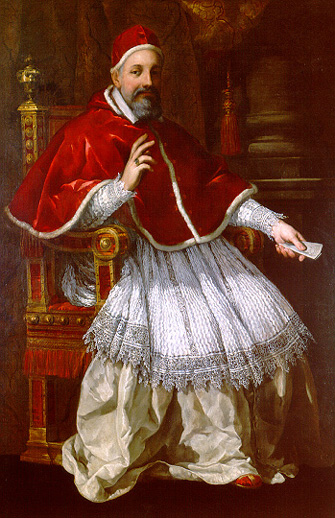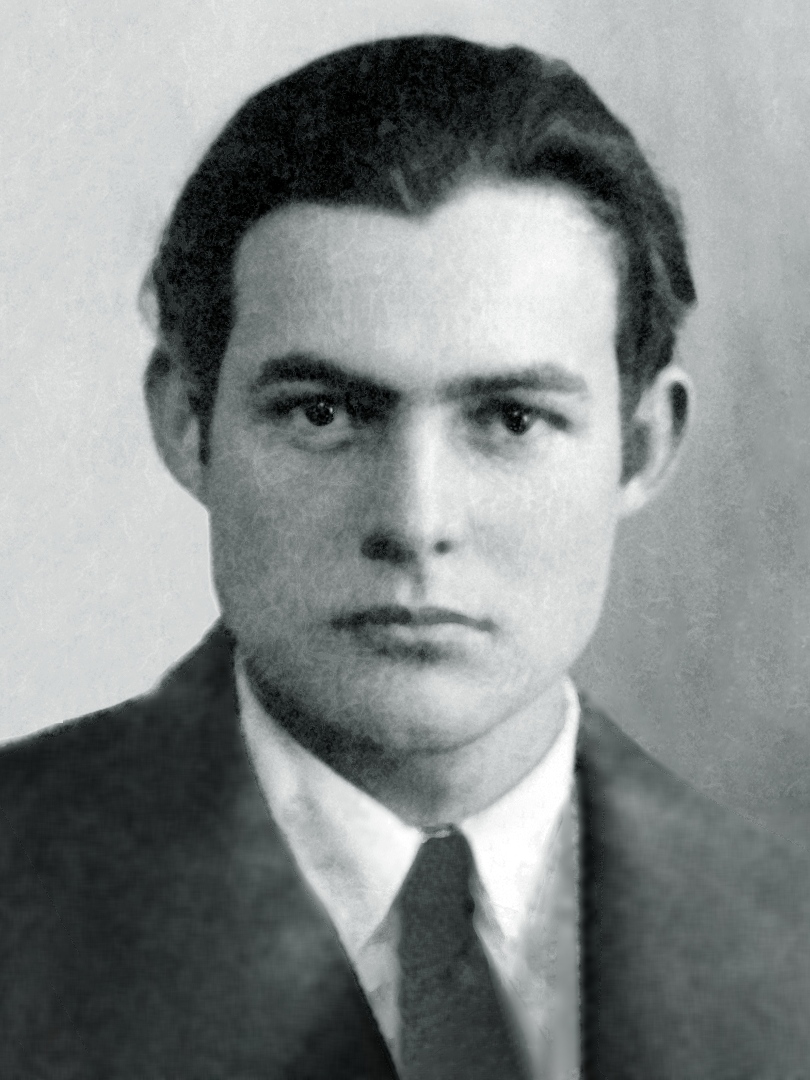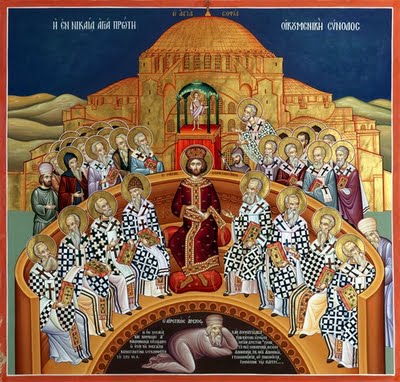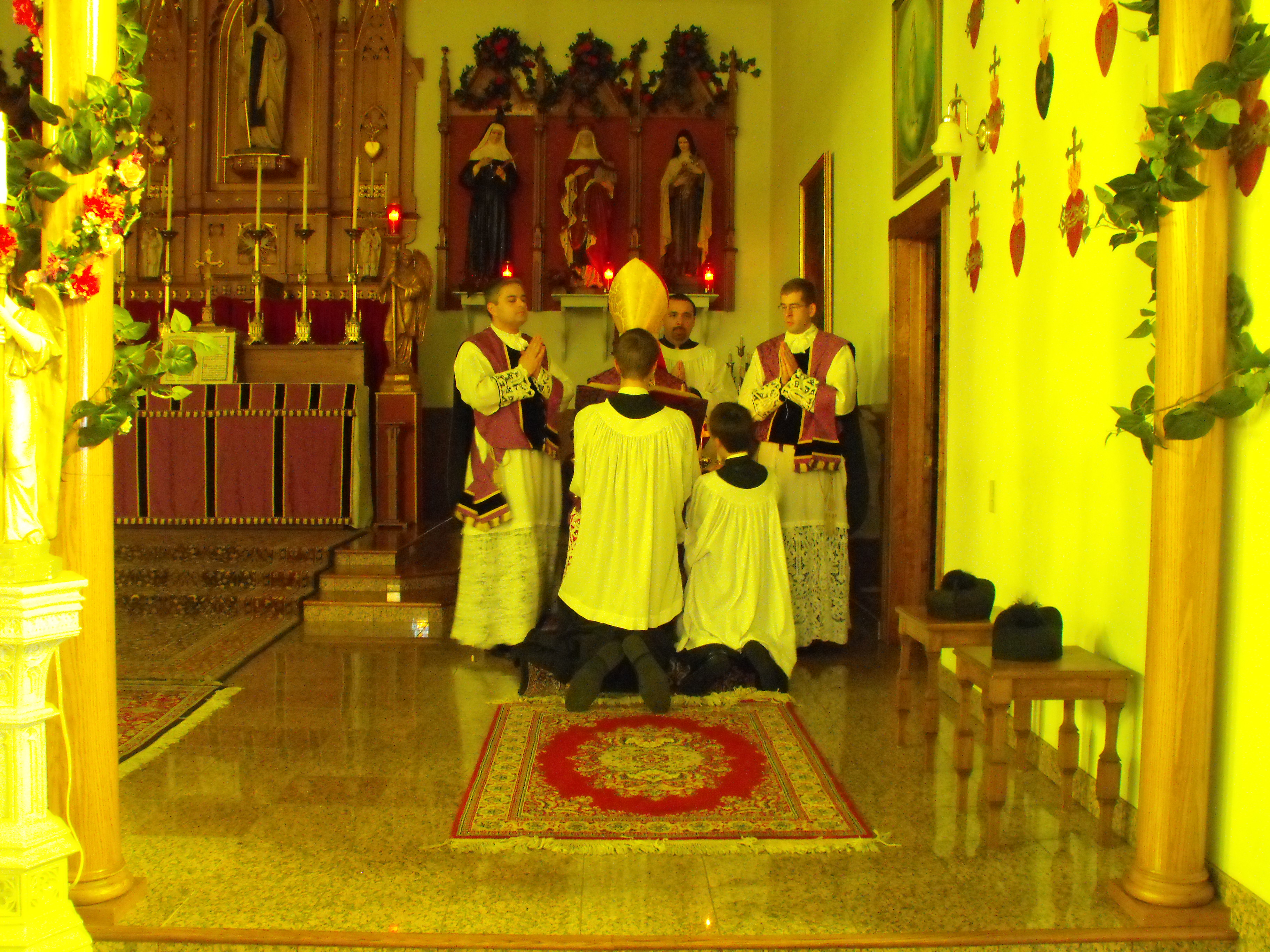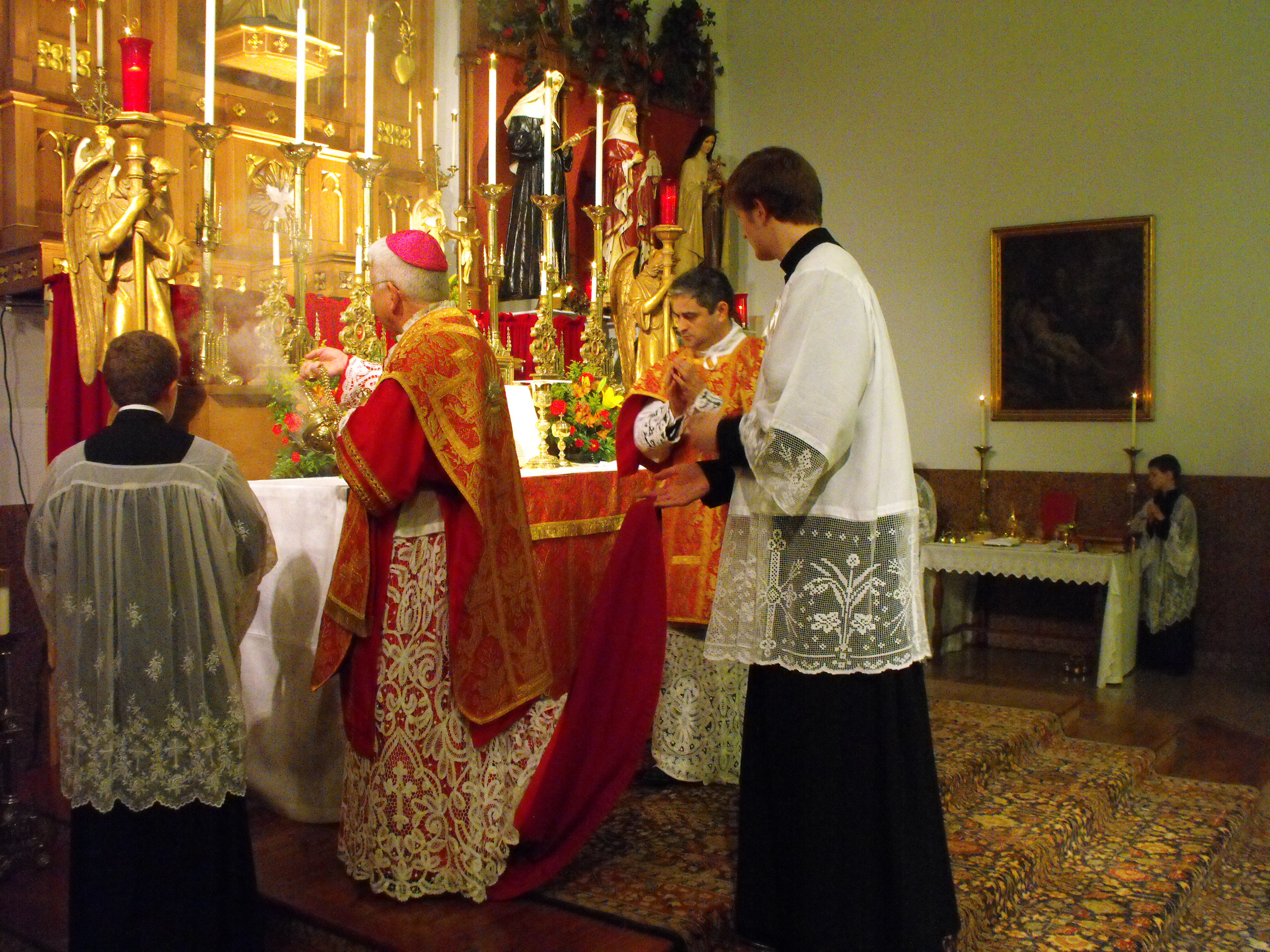During the final two centuries of the Byzantine Empire Eastern Roman culture underwent a resurgence in art and philosophy which was both introspective and nostalgic. As the Serbs and Ottomans shrank the outer realms of the remnant of the Roman Empire, the spiritual eye turned inward, towards things of religion. During these last years the Greek Church experienced the Hesychast movement and the accompanying Christian renaissance. New writings on religious subject proliferated as did scholarship of past texts. Ironically, this new found vibrancy served to stagnate Byzantine Christianity in the form of the age, much as Counter-Reformation legalism did with Roman Christianity. Men like St. Gregory Palamas, Mark of Ephesus, Nilus Cabasilas, and others created the expression of Greek Christianity that now survives as the Orthodox Church.

During this period the Byzantine liturgy evolved from a long, mystical, public action to a symbolic action adaptable to various settings, perhaps the reason why Byzantine Christianity, although rarely missionary is never the less durable under persecution. This process involved a spiritual imagination. An example of this transformation can be seen in the world of iconography. The icon of Christ above currently resides on Mount Sinai, but originates in 6th century Constantinople. In contrast the icon is fairly indicative of modern non-Russian iconography. Which looks more realistic? Precisely. Contrary to the wide-spread belief that icons are unrealistic, ancient icons were highly realistic and attempted to give hue and color to the flesh of Christ and the saints. The inward seeking renaissance, like most revivals, romanticized the past to some extent and made the icons less realistic and more mystical. The same could be said of the Divine Liturgy. Many practical things became imbued with spiritual meaning. For instance, the bread to be consecrated was hidden under a small cage called an asterisk (used in Papal Mass, too) which protected it from the cloth which covered the elements. Our feature today interpreted the asterisk as a mystical symbol of the star which covered over Bethlehem during the Nativity of the Lord. What is wrong with this interpretation? Nothing at all, and that is something liturgical critics must recognize. Praxis derives from meaning and the synthesis of various elements of rite clarifies that meaning.
Today let us consider Interpretation of the Divine Liturgy by the Greek saint Nicholas Cabasilas. Nicholas was born in the early 14th century in Thessalonica and lived most of his life as a layman. Contrary to what some believe, he was never a bishop. Robert Taft SJ believes that later in life he may have lived as a monk in Constantinople. His brief work, Interpretation, is hardly long enough to be considered a book, but we will review his essay and use it as a conversation piece to discuss the Roman liturgy.
He begins by taking the liturgy as a given, as something received and to be esteemed in virtue of what God does during its course:
"The prayers, chants the scriptural readings and all those things that are performed and said during the liturgy aid this work and purpose. In these it is as if we are seeing the whole life of Christ depicted in painting, from beginning to end. Because sanctification of the gifts, the sacrifice itself, in other words, proclaims His death, resurrection, and ascension. Since these gifts are changed into the Lord's body itself, into that which was crucified resurrected and ascended. Whatever precedes the sacrifice, reveals the events that happened before the Lord's death, that is His coming into the world, His public appearance, His miracles and teaching. The things that follow the sacrifice, symbolize the Holy Spirit's descent on the Apostles, people returning to God and their communion with Him."
Nicholas first considers why bread and wine are used as the elements of the Eucharistic liturgy. He concludes that it is because these two things are essential foods, for "when one offers food, it is like offering life itself" because life depends on material sustenance. Christ "wanted us to offer Him temporal life, and He would offer us back eternal life." Yet the Eucharist is not merely an offering of bread and wine. It is a sacrifice which remembers, in the most mystical and vividly real ways possible, the sacrifice of the Cross:
"How shall we remember the Lord in the Liturgy and what will we narrate about Him? Maybe those things that prove He was the almighty God? That, in other words, He resurrected the dead, granted light to the blind, commanded the winds to cease, fed thousands of people with a few breads? No, Christ did not ask us to remember these things, but rather those things that revealed the weakness, that is the crucifixion, the passion, the death. Because the passion was more necessary than the miracles. The sufferings of our Christ cause salvation and resurrection, whereas His miracles prove only that He is the true Savior."

Contextually, the writer comments on the proskomide, the rite by which the bread and wine were prepared in the sacristy of Hagia Sophia for the Divine Liturgy, or later in a table to the left of the altar in the Holy Place. The priest cuts out a large piece from the loaf called the "Lamb," symbolizing Christ, the innocent "led to the slaughter" (Isaiah 53:7). The prayers over the Lamb do not consecrate, but prayers such as "The Lamb of God is sacrificed, Who takes away the sins of the world" clearly anticipate the sacrifice much as the pre-Pauline offertory prayers did in the Roman rite.
The Divine Liturgy commences with the familiar "Blessed is the Kingdom of the Father and of the Son and of the Holy Spirit, now and ever and unto the ages of ages. Amen." Then follows the Great Litany of Peace. The first petition is "For peace from on high and the salvation of our souls, let us pray to the Lord." Why? Nicholas writes that the purpose is to ask for the Christian idea of peace to prevail among the congregation. Peace "does not only [mean] peace between us, when in other words, we do not have animosity against others, but also peace towards our own selves, when, in other words, our heat does not accuse us of anything."
Then follows the antiphons, taken from the psalms. These are both instructional and prophetic. They sanctify and prepare the believer for the mystery and harkens the believer to Christ's life before His ministry, when He would have prayed to the Father with the psalms of David, and even further back to those who awaited the coming of Christ. The writer underscores the importance of psalms, texts of prophecy, being sung during the synaxis. They could not be sung in full during the second half of the liturgy because Christ, at that moment, has come.
The antiphons give way to the small entrance and the Trisagion. Then the faithful come to the readings. Nicholas reflects that the deacon instructs "Wisdom" and the priest "Let us be attentive" because "he reminds the believers of the wisdom with which they must participate in the Liturgy. These are the good thoughts that those have who are rich in faith and foreign to everything human. It is truly necessary for us to attend the Liturgy with suitable thoughts, if we want, of course, not to spend our time in vain." Could there be a better definition of participatio actuosa?
A sermon traditionally follows the Gospel and then comes the great entrance and the "symbol of faith," the Creed. Nicholas' commentary on this section again indicates the spiritualizing of once practical actions. The exhortation "The doors! The doors! In wisdom, let us be attentive" once expelled the catechumens and shut the doors behind them, restricting the miracle of the consecration to the faithful. Nicholas interprets it as meaning "Open wide all the doors, that is, your mouths and ears."
The Thrice Holy Hymn is then sung followed by the anaphora. The beginning of the anaphora is a thanksgiving for all that was done for mankind's sake. The "Lord's words" from the Last Supper are repeated as a justification and narration as to why the Eucharist is celebrated. This gratitude culminates in the priest's turning towards the Father and saying "We offer You Your own from what is Your own, from all and for the sake of all." It is the offering of Christ, without human change or touch. The Father is given the most precious thing He gave mankind, His Son. This divestment from human intervention is critical to Nicholas, who writes "Neither is this manner of worship our own intervention, but You taught it to us and You urged us to worship You in this manner. For this reason, all that we are offering You is completely Your own." The priest, who Nicholas calls the "liturgist," then invokes the Holy Spirit to change the species. The commentator's reflections are entirely familiar to Roman ears at this point: "The sacrifice took place! The great victim and slaughter which was sacrificed for the sake of the world is found before our eyes, on the Holy Altar Table! Because the bread is no longer a type of the Master's body. It is the all holy Body of the Lord itself."

The Holy Spirit is given to the priest as a strength, a confirming grace to perform the divine mysteries. The priest is the servant of the Holy Spirit, not offering anything of his own. Consequentially, the validity of the Sacrament, Nicholas writes, has nothing to do with the priest's personal condition or worthiness. Indeed, the change of the species into the Sacred elements can happen in spite of the priest's sinfulness. The priest, before preparing for his own Communion, shows the Body to the faith, almost as to say "Here is the Bread of life! You see it, so run to commune of it. Not everyone, however, but whoever is holy. Because holy things are allowed only for holy people." By "holy" he means the baptized.
The priest pours warm water into the chalice, symbolizing the descent of the Holy Spirit into the Church, the Body of Christ. Then comes the Communion of the congregation:
"Christ's Body and Blood are true food and true drink. When one communes of them, they are not altered into the human body, as happens with customary foods, but the human body is altered into them, just as when iron comes into contact with fire, it also becomes fire. It does not make the fire iron."
The people communicate. The priest gives the dismissal and the blessing. The faithful partake of antidoron, a blessed bread left over from when the matter for the Eucharist was cut out prior to the Liturgy.
Here, if anywhere, is an argument against the typical "East vs. West" badinage spouted by elitists on both ends. Roman and the Greek Church were both under one cultural and political system for centuries, so one would expect the liturgy and the liturgical theology to be very similar. Indeed, their Holy Week rites were virtually identical until the deforms of 1955. Common concepts abound: the Eucharist as a sacrifice instructed by God the Father of God the Son, Communion as sanctification by union with Christ, participation as a frame of thought and not just mouthing the words, the priest as the servant of God and not his own person, and Christ as a victim on the altar. Particularly worthy of attention is the concept of the priest as servant of the Holy Spirit. The old Roman consecration rite for bishops revolved around the phrase "Receive the Holy Spirit," which many thought was the formula of ordination until Pius XII decided it was something else. Even the phrase Pius picked and the formula his successor Pope Paul VI promulgated reflect a similar theology of priesthood—ironic given the 20th century reformers' efforts to further distinguish the priesthood from the episcopacy.
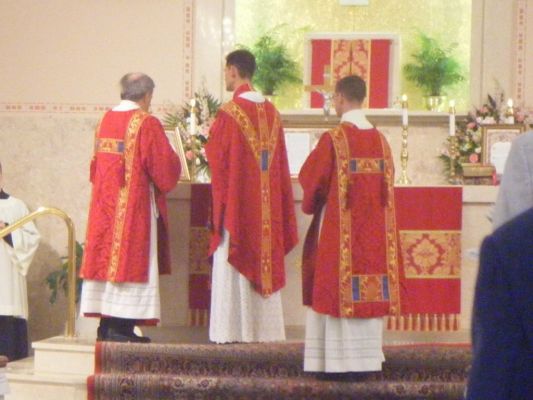
A point of difference between the two is that while the vibrant East spent the waning years of Byzantium spiritualizing the practical in its praxis, the Roman Church, just as liturgically vibrant and alive, both retained ancient practices and added new ones with specifically spiritual aims. There is not, nor was there ever, a "practical" point to the prayers before the altar or the Johannine prologue at the end of the Mass. These elements were enhancements which completed the Ordo Missae, which perfected it as a literal symbol of the work of Christ, beginning with sinners pleading for mercy, the Incarnation amid cries of "Glory be to God in the highest," the preaching ministry of Christ, the Cross and Resurrection, the descent of the Holy Spirit, and the sending of the Apostles into the world. As with the practical elements in the Byzantine rite, many integral parts of the Roman Mass came to their place by happenstance. The Gloria was once an awkward interpolation into the Mass reserved to the Pope. Yet, like the Byzantine liturgical praxis, it became something coherent with an underlying spiritual order which reflects the work of Christ. Why can the Roman Church not do the same with its Ordo Missae and, particularly, with the rites of Holy Week and the Divine Office.
The growth of the Roman liturgy during this period remains something of a sore spot to me precisely because it stopped with Trent. The Office of the Blessed Virgin, the Office of the Dead, the rites of Pontifical Mass, the ceremonies of Holy Week, the hourly and seasonal pattern of the liturgy, and the synthesis between these features with art and music all occurred from late antiquity through the high Middle Ages. Many local rites kept parts of the pre-Gregory VII Roman rite, such as Sarum having more than one psalm verse in the Introit or Lyons retaining use of the Apocalyptic seven candles held by acolytes, while fostering new liturgical expressions based on a reverence for the received Order. This, if anything, is what Geoffrey Hull called "authentic" liturgy in his masterful Banished Heart. The liturgical fallout also underscores Hull's thesis that the Rome-Constantinople schism has been an unmitigated disaster for the Roman liturgy, having lost the "heart" to the "head."
Trent did not smash all of this to bits. Trent simply froze the liturgy in place, or at least chilled it. Some trimming was due, such as feasts of local saints and excessive local use of octaves, but was too much lost in the process? The liturgy became something administered by an office in Rome rather than something held dear by the various intimate communities (dioceses and monasteries) that used it. The liturgy fell out of use and no one opposed the new Divine Office of 1911. Some opposed, rightly, the Pian Holy Week. Then of course came the Pauline Mass the following decade. Could any of this have happened had not the old liturgy froze and then shattered like grass on a cold New England morning? The greatest of these ironies is that the Greek liturgy changed quite a bit when strong authority existed in the Byzantine Church and the liturgy has remained ossified since that authority disappeared, whereas the Roman liturgy thrived locally without centralized authority, but was stilled and killed with it.
For deeper thoughts about how to read the liturgy spiritually, for an understanding of liturgical theology, and for material on the commonalities of Byzantine and Roman liturgy read Nicholas Cabasilas' Interpretation of the Divine Liturgy, available online for free.




.jpg)






